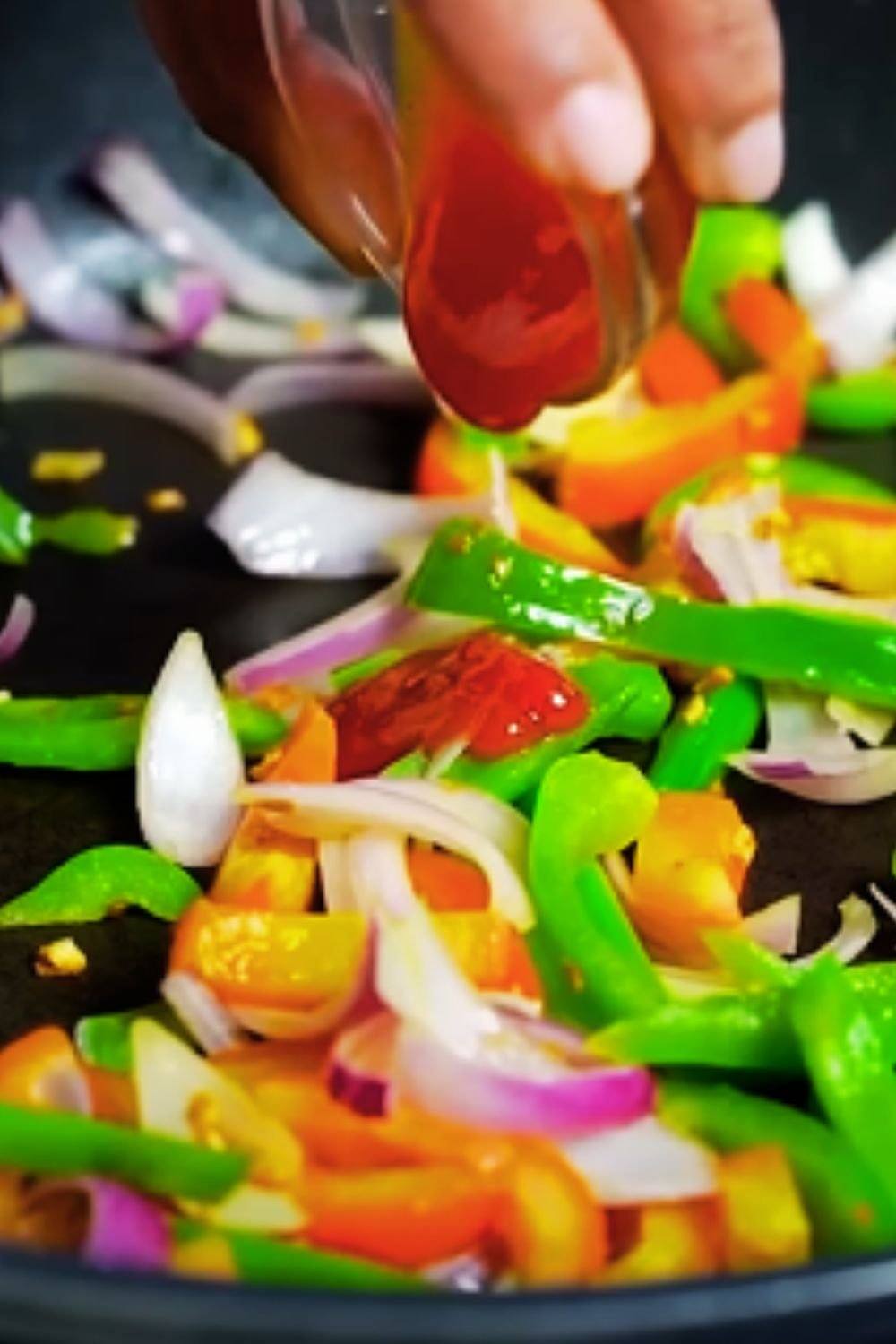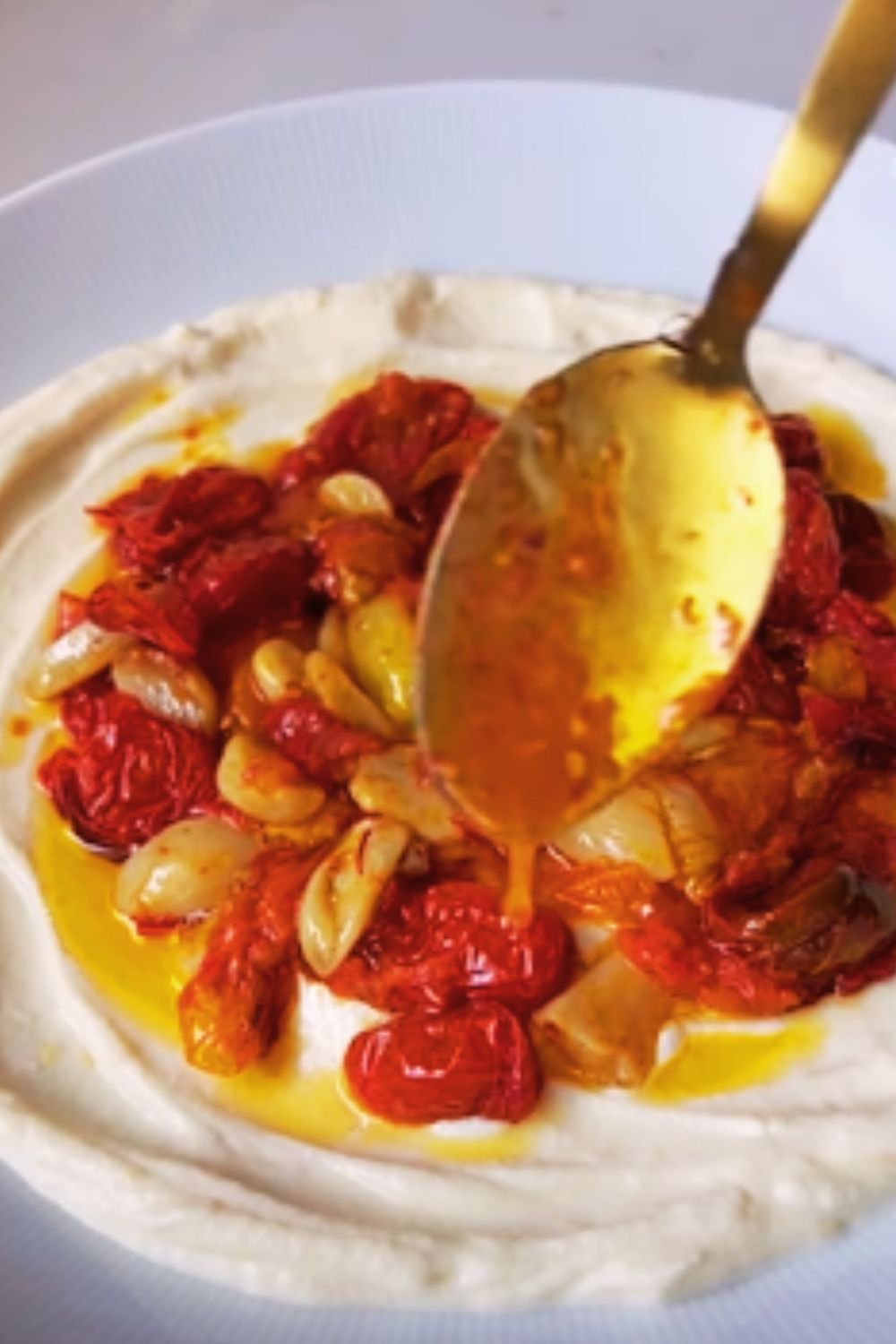There’s something magical about the sizzle of fresh vegetables hitting a hot wok. The aromatic steam that rises, carrying the scent of ginger and garlic, never fails to make my kitchen feel like a culinary sanctuary. After years of perfecting my technique, I’ve discovered that a good veggie stir fry isn’t just a quick meal—it’s a versatile canvas for creativity and nutrition that can transform your weeknight dinner routine.
Whether you’re a busy professional looking to incorporate more vegetables into your diet, a parent trying to please picky eaters, or simply someone who appreciates the beauty of a colorful plate, this comprehensive guide to making the perfect veggie stir fry will revolutionize your approach to quick, healthy cooking.
Why Veggie Stir Fry Deserves a Place in Your Weekly Rotation
Before diving into the specifics, let me share why I’m so passionate about veggie stir fry. During my busiest weeks when deadlines loom and time feels scarce, this dish has consistently saved me from the allure of takeout. In just 15 minutes—less time than it takes for delivery to arrive—I can create a meal that’s not only nourishing but also satisfying to my taste buds.
The beauty of stir fry lies in its adaptability. Working with whatever vegetables are lingering in my crisper drawer has taught me that this dish forgives substitutions and welcomes experimentation. It’s also become my secret weapon for reducing food waste, as those slightly wilting bell peppers or the half bunch of broccoli can find new life in a vibrant stir fry.
The Essential Components of a Perfect Veggie Stir Fry
Every great stir fry balances several key elements:
- Heat: The foundation of stir frying is cooking quickly over high heat
- Movement: Constant stirring ensures even cooking and prevents burning
- Texture: A mix of crisp-tender vegetables creates an interesting mouthfeel
- Flavor balance: The interplay of salty, sweet, sour, and umami elements
- Color: A rainbow of vegetables makes the dish visually appealing
Let’s break down how to master each of these components to create stir fry perfection.
Essential Equipment: Setting Yourself Up for Success
While authentic Chinese stir fries traditionally use a carbon steel wok, I’ve found that most home cooks can achieve excellent results with equipment they already own. Here’s what you’ll need:
Cooking Vessel Options:
- Wok: The ideal choice with its high sides and even heat distribution
- Large skillet: A 12-inch skillet works well for most home kitchens
- Cast iron pan: Retains heat beautifully but may be heavy to manipulate
Other Essential Tools:
- Long wooden or silicone spatula/spoon: Protects your pan and allows for quick stirring
- Sharp knife: For uniform vegetable cutting
- Cutting board: Preferably with a groove to catch juices
- Small bowls: For organizing pre-measured ingredients
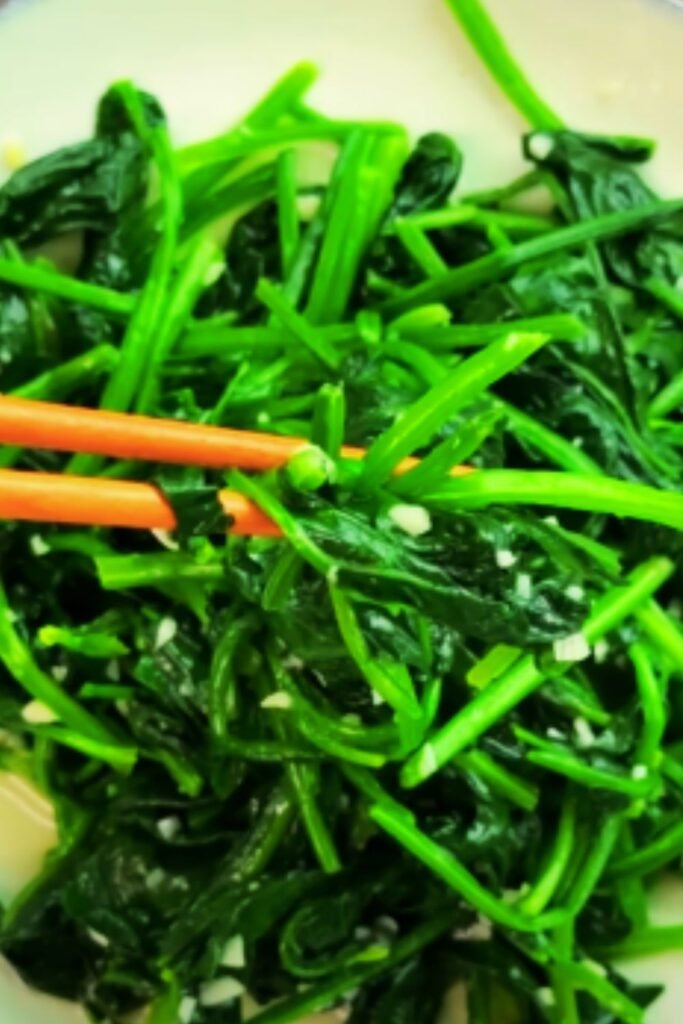
The Master Veggie Stir Fry Recipe
This recipe serves as your foundation—a template you can customize based on the vegetables you have on hand and your flavor preferences.
Ingredients
For the Base Stir Fry:
- 2 tablespoons high-heat oil (avocado, peanut, or refined coconut oil)
- 4-5 cups mixed vegetables, cut into uniform pieces (suggestions below)
- 3 cloves garlic, minced
- 1 tablespoon fresh ginger, grated
- 2-3 green onions, sliced (white and green parts separated)
- 1 tablespoon sesame seeds (optional, for garnish)
For the Basic Stir Fry Sauce:
- 3 tablespoons low-sodium soy sauce or tamari
- 1 tablespoon rice vinegar
- 1 teaspoon toasted sesame oil
- 1 tablespoon maple syrup or honey
- 1 teaspoon cornstarch mixed with 2 tablespoons water
Optional Protein Additions:
- 14 oz extra-firm tofu, pressed and cubed
- 2 eggs, beaten
- 1½ cups cooked chickpeas or edamame
Serving Suggestions:
- Steamed rice (white, brown, or cauliflower)
- Cooked noodles (rice noodles, soba, udon, or ramen)
- Quinoa or other cooked grains
Step-by-Step Instructions
- Prep All Ingredients Before Heating the Pan
- Cut all vegetables into uniform, bite-sized pieces
- Mince garlic and ginger
- Mix sauce ingredients in a small bowl
- Have everything positioned near your cooking area
- Heat Your Wok or Pan
- Place your wok over high heat until it just starts to smoke
- Add oil and swirl to coat the cooking surface
- Add Aromatics
- Toss in the minced garlic, grated ginger, and white parts of green onions
- Stir continuously for 30 seconds, being careful not to burn
- Add Vegetables in Order of Cooking Time
- Start with denser vegetables that take longer to cook (carrots, broccoli stems)
- Stir for 2-3 minutes
- Add medium-cooking vegetables (bell peppers, snap peas, zucchini)
- Stir for 1-2 minutes
- Finally add quick-cooking vegetables (leafy greens, bean sprouts)
- Pour in the Sauce
- Push vegetables to the sides, creating a well in the center
- Pour sauce into the center
- Once it starts to bubble and thicken (about 30 seconds), mix with the vegetables
- Finish and Serve
- Toss in the green parts of the onions and any garnishes
- Serve immediately over your chosen base
Vegetable Selection Guide: Creating the Perfect Combination
The key to a spectacular veggie stir fry lies in balancing textures, colors, and cooking times. Here’s a comprehensive breakdown of vegetables by cooking time:
| Cooking Category | Vegetables | Prep Method | Cooking Time |
|---|---|---|---|
| Long Cooking | Carrots | Thinly sliced or julienned | 4-5 minutes |
| Broccoli stems | Peeled and sliced | 4-5 minutes | |
| Cauliflower | Small florets | 4-5 minutes | |
| Onions | Sliced | 4-5 minutes | |
| Potatoes | Very thinly sliced | 5-6 minutes | |
| Medium Cooking | Bell peppers | Sliced or diced | 2-3 minutes |
| Zucchini | Half-moons or quarters | 2-3 minutes | |
| Green beans | Trimmed | 3-4 minutes | |
| Broccoli florets | Bite-sized pieces | 2-3 minutes | |
| Snow peas | Whole or halved | 2 minutes | |
| Mushrooms | Sliced | 2-3 minutes | |
| Quick Cooking | Baby spinach | Whole leaves | 30-60 seconds |
| Bean sprouts | Whole | 30-60 seconds | |
| Bok choy leaves | Torn pieces | 30-60 seconds | |
| Scallion greens | Sliced | 30 seconds | |
| Fresh herbs | Chopped or whole leaves | Last few seconds |
I typically aim for at least one vegetable from each cooking category, ensuring a variety of textures in the final dish. My go-to combination is carrots, broccoli, bell peppers, and baby spinach—a quartet that offers contrasting colors, textures, and nutritional benefits.
Mastering Stir Fry Sauce: The Flavor Foundation
While the basic sauce recipe I’ve provided works beautifully, understanding the principles behind a great stir fry sauce allows for endless customization. Every balanced sauce contains:
The Basic Formula:
- Salty element: Soy sauce, tamari, coconut aminos
- Sweet element: Honey, maple syrup, brown sugar
- Sour/acid element: Rice vinegar, lime juice
- Umami booster: Mushroom powder, nutritional yeast, miso
- Aromatic element: Garlic, ginger, scallions
- Thickener: Cornstarch slurry, arrowroot powder
Specialty Sauce Variations
Spicy Kung Pao-Inspired Sauce:
- 3 tablespoons low-sodium soy sauce
- 1 tablespoon rice vinegar
- 2 teaspoons chili garlic sauce or sambal oelek
- 1 tablespoon maple syrup
- ½ teaspoon Chinese five-spice powder
- 1 teaspoon cornstarch mixed with 2 tablespoons water
Peanut Sauce:
- 2 tablespoons low-sodium soy sauce
- 2 tablespoons natural peanut butter
- 1 tablespoon rice vinegar
- 1 tablespoon maple syrup
- ¼ teaspoon red pepper flakes
- 2-3 tablespoons water to thin
- 1 teaspoon cornstarch
Ginger Citrus Sauce:
- 2 tablespoons low-sodium soy sauce
- 2 tablespoons orange juice
- 1 tablespoon lime juice
- 1 tablespoon honey
- 1 tablespoon grated ginger
- 1 teaspoon cornstarch mixed with 1 tablespoon water
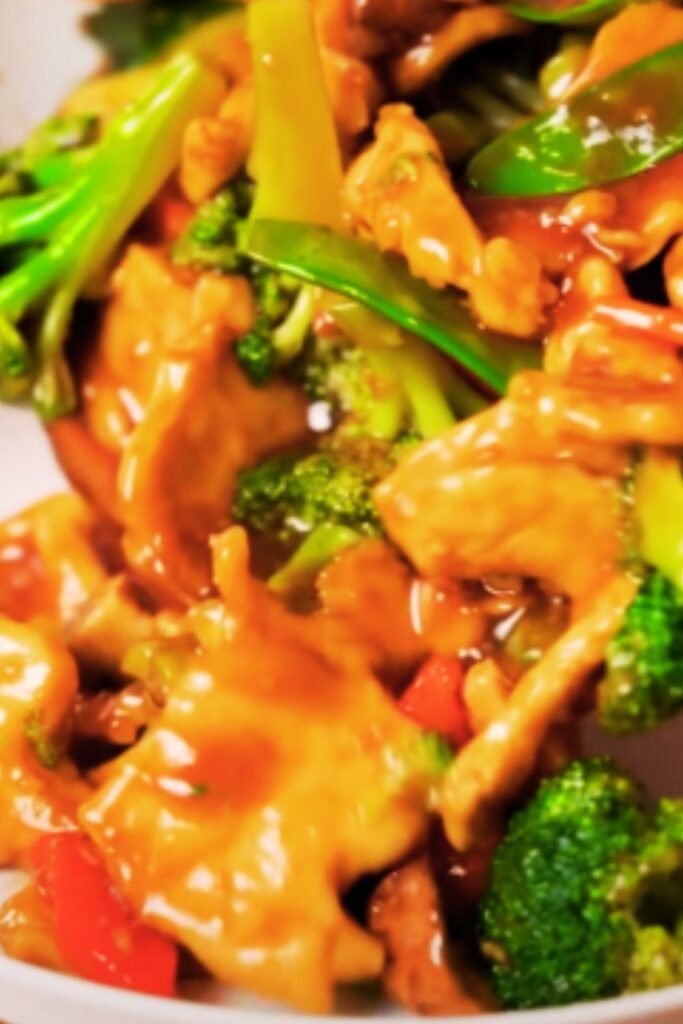
Common Stir Fry Mistakes and How to Avoid Them
Through years of making stir fries, I’ve encountered (and made) nearly every possible mistake. Here’s how to avoid the most common pitfalls:
Overcrowding the Pan
- Problem: Vegetables steam rather than stir fry, becoming soggy
- Solution: Cook in batches if necessary, leaving at least 30% of pan space visible
Not Prepping All Ingredients in Advance
- Problem: Ingredients burn while you’re still chopping others
- Solution: Practice “mise en place”—having everything cut, measured, and ready before heating the pan
Using Low Heat
- Problem: Vegetables release water and become mushy instead of caramelizing
- Solution: Preheat your pan thoroughly and maintain high heat throughout cooking
Stirring Too Little (or Too Much)
- Problem: Uneven cooking or preventing proper browning
- Solution: Stir frequently but allow brief periods of contact with the hot pan for caramelization
Adding Sauce Too Early
- Problem: Vegetables boil in the sauce rather than caramelizing
- Solution: Add sauce only after vegetables are nearly cooked through
Batch Prepping Vegetables for Week-Long Stir Fry Success
One strategy that’s revolutionized my weeknight cooking is prepping vegetables in advance. Here’s my system:
- Sunday Prep Session:
- Wash, dry, and cut sturdy vegetables (carrots, bell peppers, broccoli)
- Store in airtight containers with a paper towel to absorb moisture
- Keep more delicate vegetables whole until the day of cooking
- Storage Guidelines:
| Vegetable | Prep Method | Storage Container | Shelf Life |
|---|---|---|---|
| Carrots | Peeled and sliced | Airtight container with water | 5-7 days |
| Bell Peppers | Seeded and sliced | Airtight container with paper towel | 3-4 days |
| Broccoli | Cut into florets | Airtight container with paper towel | 3-4 days |
| Snap Peas | Trimmed | Airtight container with paper towel | 3-4 days |
| Ginger | Peeled and grated | Small jar | 7 days |
| Garlic | Minced | Small jar with olive oil | 5-7 days |
| Green Onions | Sliced (store white and green parts separately) | Airtight container with paper towel | 3-4 days |
- Sauce Preparation:
- Mix sauce bases (without cornstarch) and refrigerate for up to 5 days
- Add cornstarch slurry just before cooking
With this preparation, I can have a fresh stir fry on the table in under 10 minutes on busy weeknights.
Nutritional Benefits: Why Veggie Stir Fry Is a Powerhouse Meal
Beyond convenience and flavor, veggie stir fry offers impressive nutritional benefits:
Nutrient Preservation The quick cooking method preserves water-soluble vitamins (like vitamin C and B vitamins) that can be lost during longer cooking processes.
Balanced Macronutrients A typical veggie stir fry provides:
- Carbohydrates: From the vegetables and optional grain base
- Proteins: When adding tofu, eggs, or legumes
- Healthy Fats: From the cooking oil and optional nuts or seeds
Micronutrient Density The variety of colorful vegetables delivers:
- Vitamin A: From carrots, red bell peppers
- Vitamin C: From broccoli, bell peppers, snow peas
- Vitamin K: From leafy greens like bok choy
- Folate: From broccoli and leafy greens
- Minerals: Including potassium, magnesium, and iron
Fiber Content The high vegetable content provides both soluble and insoluble fiber, supporting digestive health and promoting satiety.
Kid-Friendly Adaptations: Bringing the Whole Family to the Table
As someone who’s cooked for children with varying levels of vegetable acceptance, I’ve developed strategies to make veggie stir fry more appealing to younger palates:
- Involve kids in preparation: Let them help select vegetables at the store or assist with safe preparation tasks
- Offer sauce on the side: Some children prefer their food components separate
- Create a “build your own” stir fry bar: Let each family member customize their bowl
- Start with familiar vegetables: Gradually introduce new ones as acceptance grows
- Add a favorite element: Including a well-liked component can increase acceptance of the entire dish
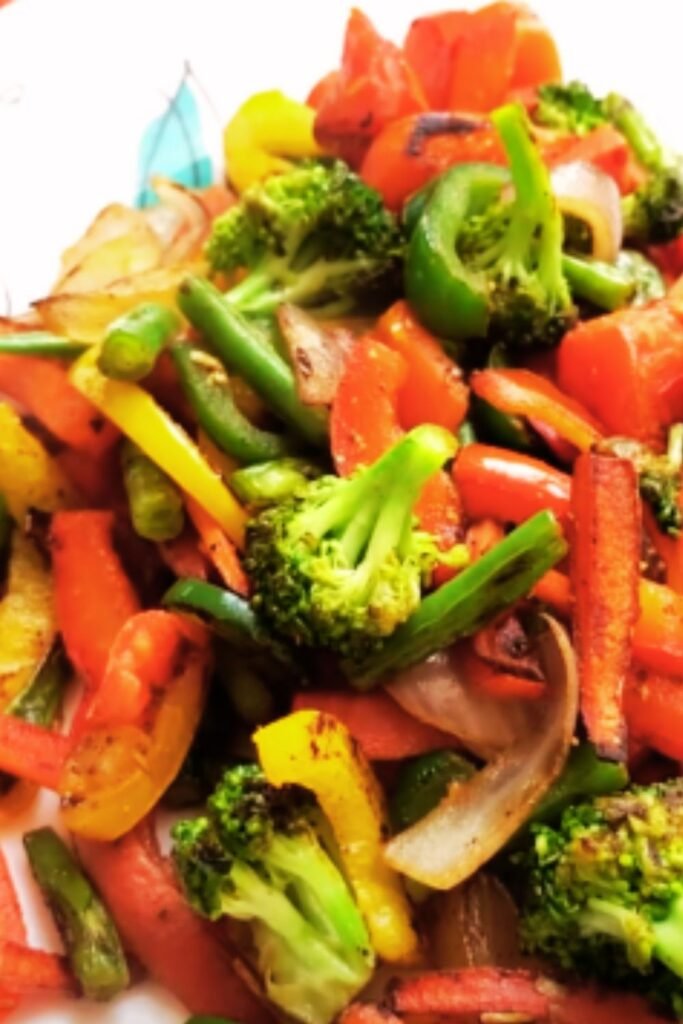
Seasonal Variations: Embracing What’s Fresh Year-Round
Adapting your stir fry to seasonal produce not only ensures the freshest flavor but also aligns with more sustainable and economical cooking practices.
Spring Stir Fry
- Asparagus
- Sugar snap peas
- Spring onions
- Baby bok choy
- Fresh herbs like mint and chives
Summer Stir Fry
- Zucchini and yellow squash
- Bell peppers
- Green beans
- Eggplant
- Fresh basil
Fall Stir Fry
- Brussels sprouts
- Butternut squash (thinly sliced)
- Carrots
- Cauliflower
- Kale
Winter Stir Fry
- Root vegetables (parsnips, turnips)
- Cabbage
- Broccoli
- Onions
- Frozen edamame or peas
I’ve found that embracing seasonal cooking not only provides peak flavor but also adds variety to my routine, preventing stir fry fatigue.
Frequently Asked Questions
Q: Can I use frozen vegetables for stir fry? Yes! While fresh vegetables provide the best texture, frozen vegetables can work well in a pinch. The key is to avoid thawing them first—add them directly to the hot pan from frozen, but be aware that they’ll release more moisture, so you might need to cook them slightly longer and at a higher heat to evaporate the excess liquid.
Q: How can I make my stir fry sauce thicker? The most reliable method is using a cornstarch slurry (cornstarch mixed with cold water). Start with 1 teaspoon cornstarch mixed with 2 tablespoons water for a standard recipe. For a gluten-free alternative, arrowroot powder works well in the same proportion. Remember that the sauce will thicken further as it cools.
Q: My vegetables always end up soggy. What am I doing wrong? Three common culprits: 1) Your pan isn’t hot enough, 2) You’re overcrowding the pan, forcing vegetables to steam rather than fry, or 3) You’re cutting vegetables in inconsistent sizes. Make sure your pan is very hot before adding vegetables, cook in batches if necessary, and cut vegetables into uniform sizes appropriate for their density.
Q: Is a wok really necessary? While a wok is traditional and ideal due to its shape and heat distribution, it’s absolutely not necessary for a delicious stir fry. A large skillet or sauté pan will work well—just make sure it has enough surface area to allow for proper heat distribution.
Q: How can I add protein without meat? Excellent plant-based options include: extra-firm tofu (pressed and cubed), tempeh (sliced or cubed), edamame, chickpeas, or a scrambled egg cooked directly in the wok before adding vegetables. Each brings its own texture and flavor profile to complement your vegetables.
Q: Can I make stir fry ahead of time? While stir fry is at its textural best immediately after cooking, you can prepare all components ahead of time. For meal prep, I recommend slightly undercooking the vegetables, cooling them quickly, and storing the sauce separately. When reheating, a quick high-heat stir in a pan will refresh the dish better than microwave reheating.
Final Thoughts: The Art of Intuitive Stir Frying
After years of following recipes precisely, I’ve learned that stir frying is ultimately an intuitive cooking method. It’s about understanding the principles—high heat, quick cooking, constant movement—and then adapting to what’s in your refrigerator and what flavors you’re craving.
I encourage you to use this guide as a starting point, but don’t be afraid to experiment. Notice how different vegetables behave in the pan, how sauces coat and cling, and how heat transforms each ingredient. Soon you’ll find yourself creating signature stir fries without consulting a recipe, relying instead on your developing culinary intuition.
The humble veggie stir fry has become much more than a quick meal in my kitchen—it’s a celebration of vegetables, a canvas for creativity, and a reliable solution to the eternal question: “What’s for dinner?” I hope it brings the same satisfaction to your table.
Q&A Section
Q: How do I prevent my garlic from burning in the stir fry? Garlic burns easily due to its high sugar content. I recommend adding it after your longest-cooking vegetables have had a head start, or creating a small well in the center of your already-cooking vegetables to add the garlic. Keep it moving constantly and consider mixing it with ginger, which helps prevent burning.
Q: What’s the best oil for stir frying? The best oils have a high smoke point and neutral flavor. My top choices are avocado oil, peanut oil, and refined coconut oil. Avoid extra virgin olive oil, which has a lower smoke point and will smoke excessively at stir fry temperatures.
Q: Do I really need to use cornstarch in my sauce? While not absolutely necessary, cornstarch serves two important purposes: it thickens the sauce so it clings to vegetables rather than pooling at the bottom, and it creates that characteristic glossy appearance associated with restaurant stir fries. If you prefer to skip it, reduce your sauce separately until slightly thickened before adding to vegetables.
Q: How can I make my home stir fry taste more like restaurant versions? Restaurant stir fries often have that distinctive “wok hei” flavor from extremely high heat. While difficult to replicate exactly at home, use the highest heat your stove allows, make sure your pan is properly preheated, and consider adding a touch of dark sesame oil at the end for that characteristic flavor. Some restaurants also add a pinch of MSG, which you can substitute with a small amount of mushroom powder for similar umami enhancement.
Q: Is there a way to reduce the sodium in stir fry sauce without sacrificing flavor? Absolutely! Use low-sodium soy sauce as your starting point, then boost other flavor elements: increase aromatic ingredients like garlic, ginger, and scallions; add citrus zest or juice for brightness; incorporate fresh herbs; and consider umami boosters like nutritional yeast or mushroom powder that don’t add sodium.
